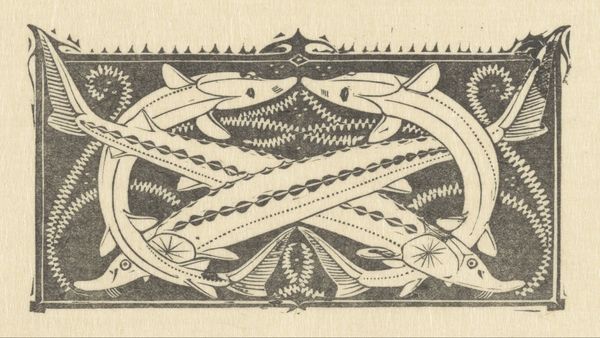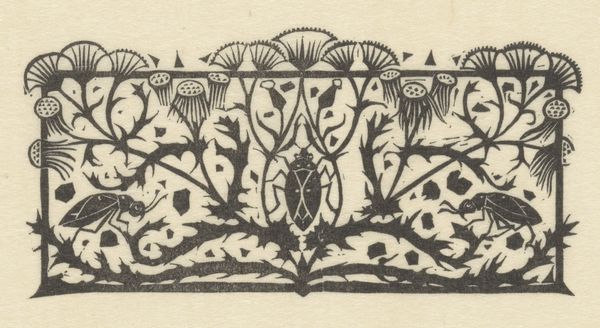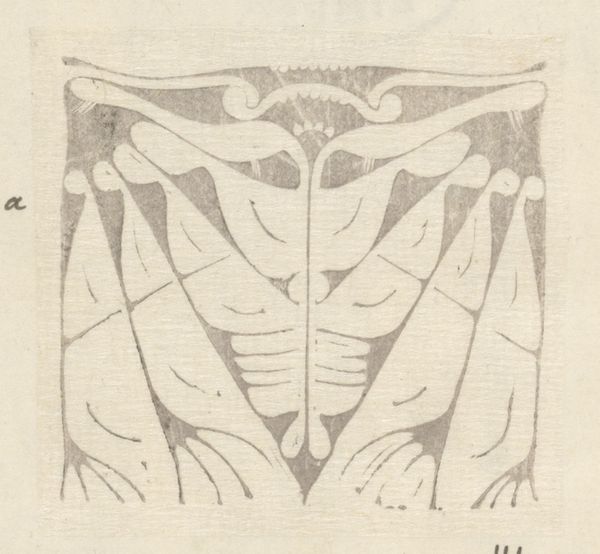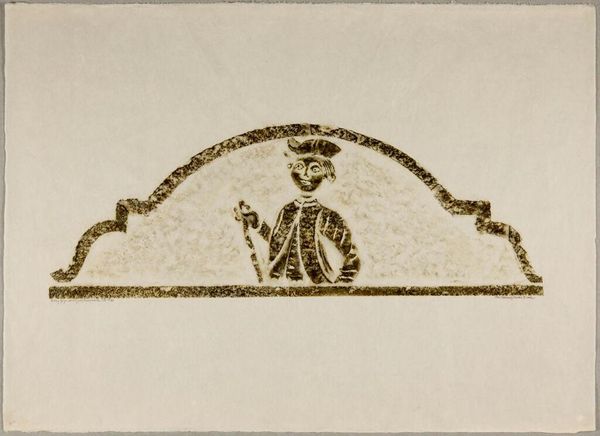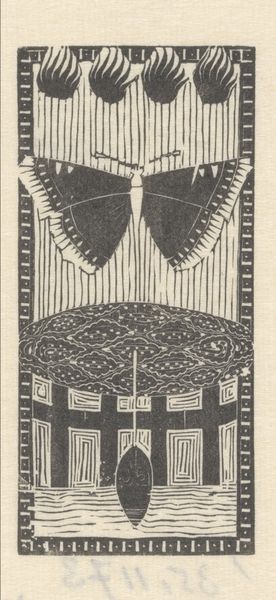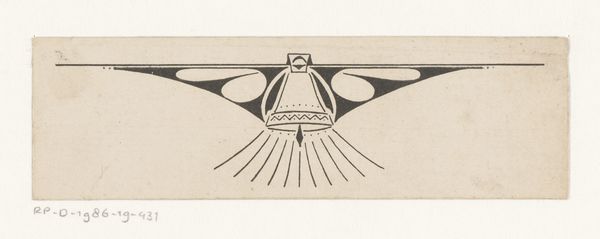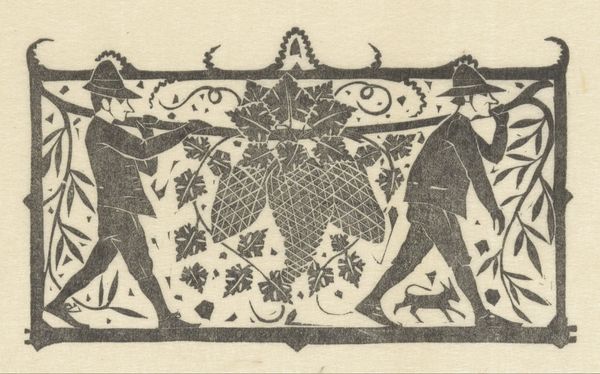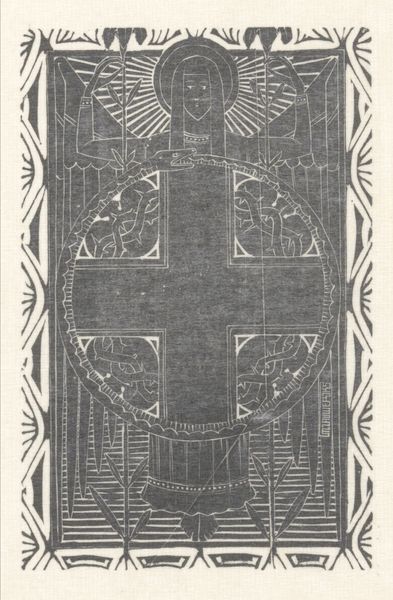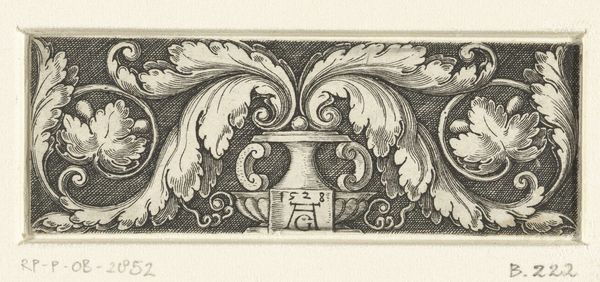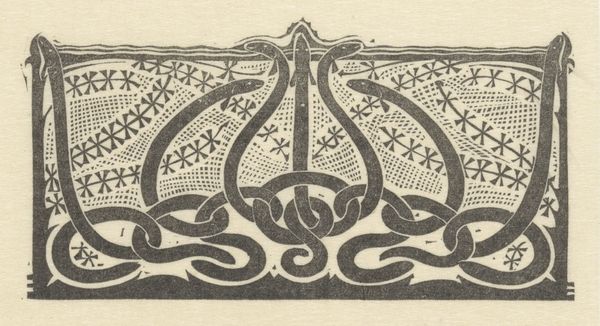
graphic-art, print, woodcut
#
graphic-art
#
pen drawing
# print
#
pen illustration
#
pen sketch
#
geometric
#
woodcut
#
line
Dimensions: height 32 mm, width 117 mm
Copyright: Rijks Museum: Open Domain
Editor: Here we have Gerrit Willem Dijsselhof's "Titelhoofd met kraanvogels voor 'Inhoud'", created between 1893 and 1927. It's a woodcut print featuring a striking, stylized design of cranes. The piece feels very symbolic and ordered to me. What socio-cultural contexts informed Dijsselhof’s approach to this imagery? Curator: Considering the period, Dijsselhof's choices resonate with the rising influence of symbolism and Japonisme in European art. The stylized cranes, almost hieroglyphic, evoke a sense of exoticism, reflecting a broader fascination with Eastern cultures and the aesthetics of linear design. How might the function of this work – a title heading – impact its reception by the public at the time? Editor: That's a great question. Given it's a title heading, it probably set a specific tone for the publication, possibly indicating an interest in art nouveau or more esoteric subject matter. Do you think the geometric elements also suggest something about the period's values? Curator: Precisely. The geometric elements point to the burgeoning influence of decorative arts movements, such as the Arts and Crafts movement, which promoted craftsmanship and integrated art into everyday life. The very presence of such detailed artistry in a commonplace object hints at a societal valuing of beauty and refined aesthetics. How does that square with your understanding of the late 19th, early 20th century? Editor: I see what you mean. It wasn't just about ‘high art’, but bringing artistic expression into the everyday. Thinking about the cranes again, could their specific positioning relate to symbolic narratives of the time, given the increased public interest in exotic imagery? Curator: It's plausible. Cranes often symbolize longevity and good fortune, suggesting an aspirational tone aimed at the readership. Consider, too, how these types of images, circulated through printed media, contribute to broader constructions of cultural identity and understanding of other nations. I found looking closer into how society at this time appreciated such stylized prints deeply engaging. Editor: That really helps connect it to the bigger picture. Now I am very keen to go and explore the influence of prints on cultural perception in Dijsselhof's time.
Comments
No comments
Be the first to comment and join the conversation on the ultimate creative platform.
